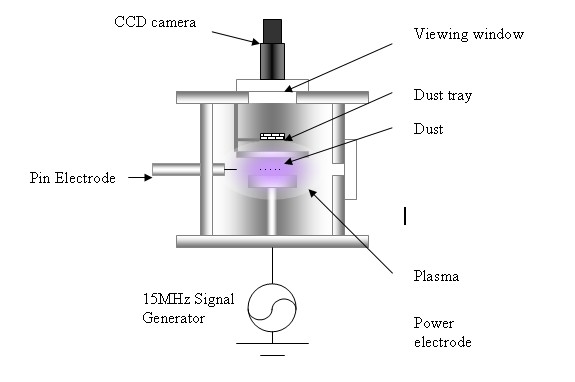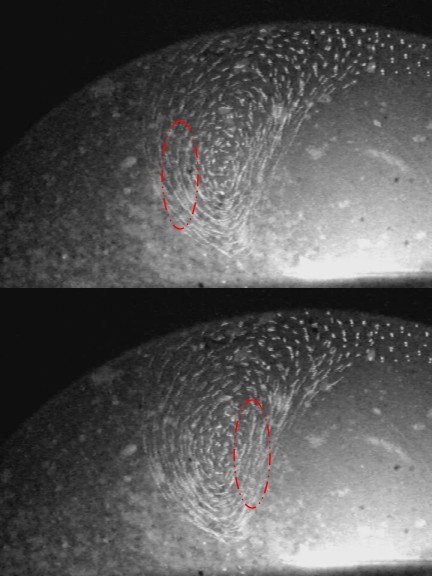1 - Introduction
The experiments are conducted within a 40cm inner
diameter cylindrical stainless steel vacuum chamber with the height of 30cm.
The chamber has many ports and viewing windows for diagnostic access. The
discharge is powered by an amplified signal generator output. The dust is
introduced via a dust tray that is suspended within the chamber. The
introduced dusts are levitated within the plasma as the negative charge gained
by the dust reacts to the surround electric fields and equalizes gravitational
forces. The data was collected with the use of a CCD camera suspended above
the top viewing window and stored on to VCR tapes. The CCD camera has a
shutter rate of 60Hz, while data is stored at 25Hz. In order to construct the
vortex structure, an external positively charged pin electrode was introduced.
This electrode effectively creates a temperature gradient within the system.
The mechanics of such a system will not be discussed in further detailed as
this is a visualization project, not a complex plasma project. (see figure 1).
The results of the experiment are displayed below (see figure 2).

-
Figure 1 - Experimental setup
-
Figure 2 -
The above are just 2 of the many frames as the result of the CCD camera.


